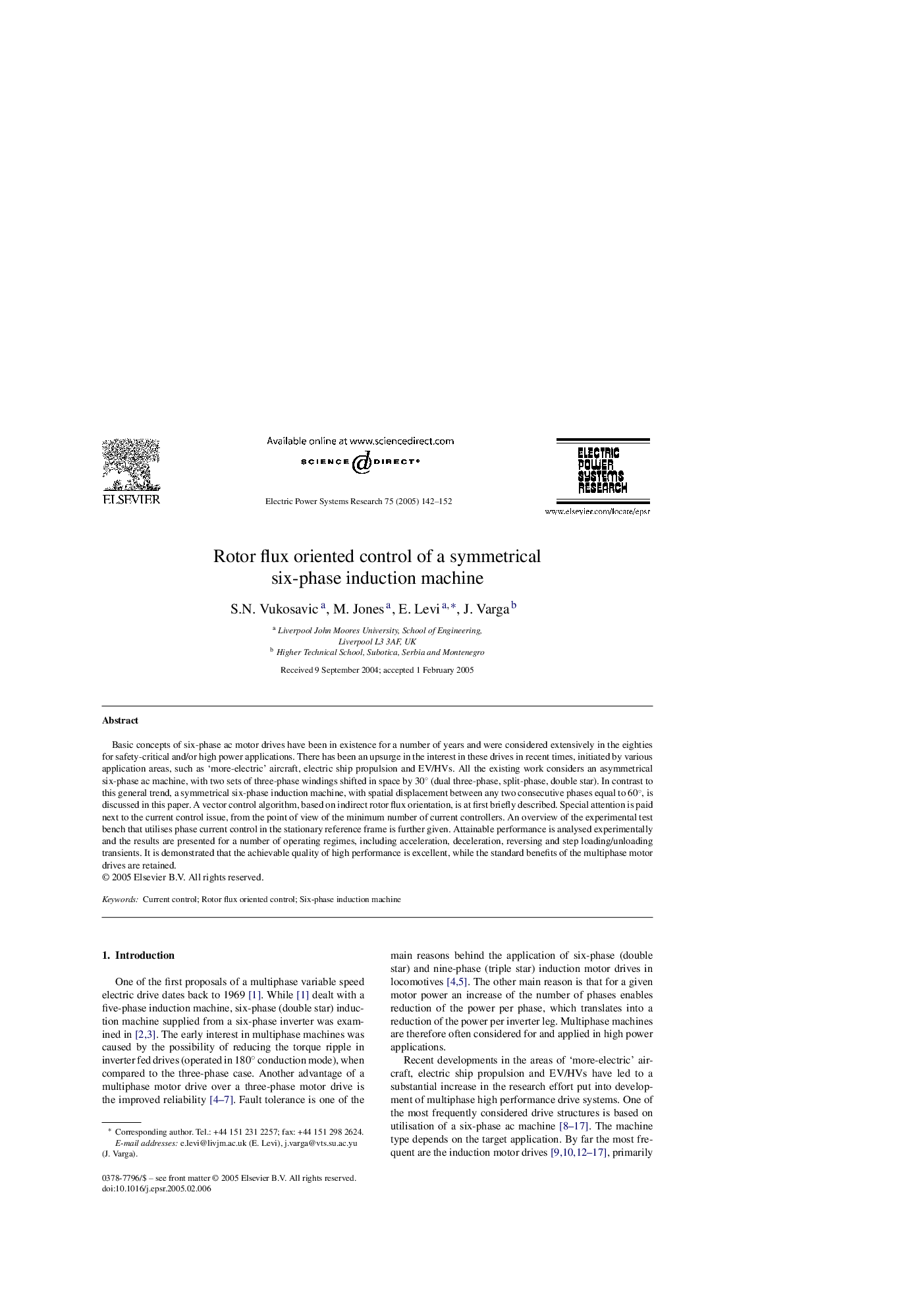| Article ID | Journal | Published Year | Pages | File Type |
|---|---|---|---|---|
| 9697980 | Electric Power Systems Research | 2005 | 11 Pages |
Abstract
Basic concepts of six-phase ac motor drives have been in existence for a number of years and were considered extensively in the eighties for safety-critical and/or high power applications. There has been an upsurge in the interest in these drives in recent times, initiated by various application areas, such as 'more-electric' aircraft, electric ship propulsion and EV/HVs. All the existing work considers an asymmetrical six-phase ac machine, with two sets of three-phase windings shifted in space by 30° (dual three-phase, split-phase, double star). In contrast to this general trend, a symmetrical six-phase induction machine, with spatial displacement between any two consecutive phases equal to 60°, is discussed in this paper. A vector control algorithm, based on indirect rotor flux orientation, is at first briefly described. Special attention is paid next to the current control issue, from the point of view of the minimum number of current controllers. An overview of the experimental test bench that utilises phase current control in the stationary reference frame is further given. Attainable performance is analysed experimentally and the results are presented for a number of operating regimes, including acceleration, deceleration, reversing and step loading/unloading transients. It is demonstrated that the achievable quality of high performance is excellent, while the standard benefits of the multiphase motor drives are retained.
Related Topics
Physical Sciences and Engineering
Energy
Energy Engineering and Power Technology
Authors
S.N. Vukosavic, M. Jones, E. Levi, J. Varga,
